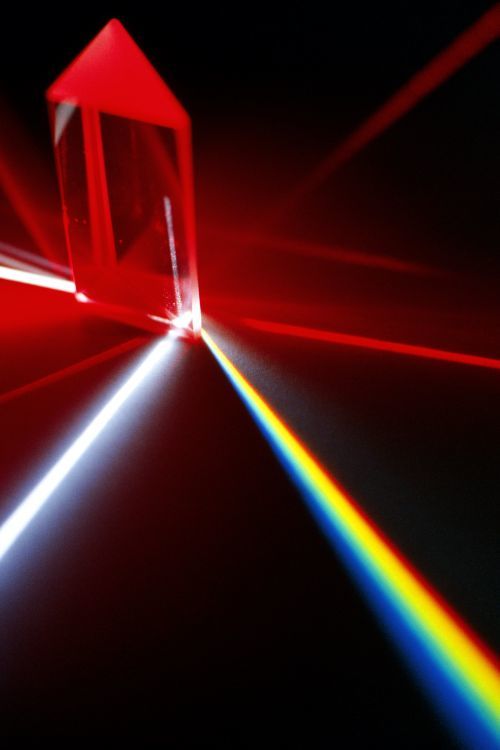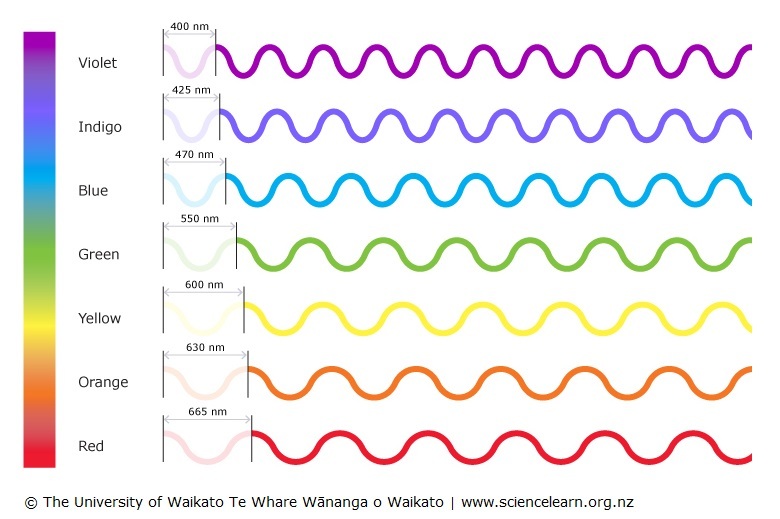If there is no light, there is no sight – explore our resources and learn more about the basics of light, how we see and how we perceive the world around us. The research work of three scientists is also profiled – they are working in the areas of optics, ophthalmology and biophotonics.
Learn about the basics of light and how it behaves:
- How is light produced? What is light made up of? How does light travel through space? Find out more in the article Light basics.
- When blue light, red light and yellow light are mixed, white light results, but when blue, red and yellow paints are mixed, the resulting paint is a dark brown. We explain this apparent confusion in the article Colours of light.
- Ever wonder why fluorescent colours look so bright? It is all due to energy, as explained in the article Light – colour and fluorescence.
- Apart from looking directly at a light source, most of what we see is as a result of the process of reflection. We look at the main principles of reflection in the article Reflection of light.
- Light in a vacuum travels at a constant speed of 300,000 km/s. Its speed in media like air, water and glass is slightly slower. It is this change of speed that lies behind the phenomenon known as refraction. Discover more about the bending of light by refraction.
- Is light made of waves or particles? There is evidence for both. These articles delve into some of the key characteristics of waves: Fundamentals of waves, Waves and energy – wave basics and Waves and energy – energy transfer.
- A shadow is the absence of light. Learn how they form and how and why they change in the article Light and shadows.
We also investigate how we see.
Most people have some understanding of how we see things, but there is more to it than meets the eye. Find out about the conflicting theories that surround the eye’s ability to focus on objects as well as how the eye can transform light energy into electrical energy.
Both of our eyes allow us to see in 3D, but does this mean that people with only one eye can only see in 2D? Find out more about depth in visual perception and seeing in 2D and 3D in the artice Depth perception.
Meet the scientists
We profile three scientists working in this field.
- Dr Adrian Dorrington from the University of Waikato is investigating time-of-flight 3D cameras. The problem to be resolved in Adrian’s research is how to improve the capability of these cameras to measure accurately distance from the camera to the object being viewed.
- Associate Professor Rainer Künnemeyer is also from the University of Waikato, but his area of research is in biophotonics. This is a branch of science that deals with the interaction of light with biological materials. Part of Rainer’s research involves developing a laser light scattering method to assess the ripeness of different fruits.
- Associate Professor Gordon Sanderson is an ophthalmologist with the Dunedin School of Medicine. His research projects are many and varied, but as Director of Glaucoma New Zealand, he has an on-going interest in this disease that affects the functioning of the optic nerve.
Take up the challenge
Student activities include a mix of hands-on and literacy-based investigations. Consider beginning a teaching sequence with Light and sight: true or false? The activity is supported by the teacher resource Alternative conceptions about light and is a useful pretest to establish student understanding.
Students who like to build models will enjoy these very effective activities to explore the basics of light: Investigating reflection, Investigating refraction and spearfishing, Pinhole cameras and eyes and Make a hologram-like projector.
The Question dice game and Angle of refraction calculator challenge provide opportunities for students to practice literacy and numeracy skills.
Very young students can start their exploration of light concepts with the activities Investigating shadows, Investigating shadows and the position of the Sun and Investigating shadows using transparent, translucent and opaque materials.
Use the activity Labelling the eye to learn about and identify parts of the human eye.
Cows’ eyes are a good size for observing many of the parts found in a human eye – find out how to dissect one.
Question bank
The Light and sight– question bank provides a list of questions about ceramics and places where their answers can be found. The questions support an inquiry approach.
Key terms
For explanations of key concepts, see Light and sight – key terms.
Timeline
Explore this timeline to discover key advances in ideas about light, how we see and how we perceive the world around us.
Teachers using these resources
In this online PD session, Teachers using the Hub – Light and sight in the classroom, secondary teacher Steve Chrystall talks about the Science Learning Hub’s light and sight resources and how he used them to teach year 9 and 10 students. Primary teacher Miel MacLean then describes how she adapted the same resources for her year 5 and 6 students.
Related content
Our eyes – our vision describes some of the eye conditions that can affect human vision and can they affect learning.
Improving vision screening for children describes how a peer-to-peer vision testing project hopes to alert students to eye conditions that affect their vision.
The Science Learning Hub team has curated a collection of resources related to light and shadows (intended for teachers and students working at New Zealand Curriculum levels 1 and 2) and two collections about light, colour and the workings of the human eye – Light and colour and How we see the world, (these collections have resources for students working at New Zealand Curriculum levels 1–4).
Log in to make one of both of these collections part of your own private collection, just click on the copy icon –you can then add additional content, notes, share and collaborate with others. Find out more about how to make the most of the collection tool.




